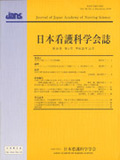Japanese
English
- 販売していません
- Abstract 文献概要
- 参考文献 Reference
- サイト内被引用 Cited by
要旨
本研究は,在宅での看取りを行う介護者の情緒体験を明らかにし,そのなかから予期悲嘆の構成要素を見出すことを目的に,在宅で看取りを行った介護者10名に半構成的面接を行い,質的統合法(KJ法)を用いて分析した.事例ごとの個別分析を行った後,統合分析により空間配置図を作成した.
その結果,予期悲嘆の構成要素としては〈死別への先行不安〉を中心的要素として,加えて〈別世界に生きる感覚:思考回路制御,孤立感,疎外感〉〈やり場のない病気への恨み・無念・怒り〉〈死を悼むスピリチュアルな喪失感〉〈介護最優先による身体への負担感・不安感〉〈家で看る調整役割の重圧感〉のあわせて6つが抽出された.また,看取りがもたらした情緒体験として〈切り離せない自責の念:介護や判断への後悔〉〈家で看取ることへのプラス感情(肯定感)〉が抽出された.今後この研究結果を「予期悲嘆のアセスメントツール作成」に活用できると考える.
Abstract
Purpose:This study investigated the emotional experiences of caregivers for family members dying at home in order to identify the factors that constitute anticipatory grief.
Methods:Data were collected using semi-structured interviews conducted on 10 bereaved families in which a family member had died at home. The recorded interviews were qualitatively analyzed using the KJ method. After analyzing the data individually according to each case, a synthetic analysis was conducted in order to create a diagram of the factors of anticipatory grief.
Results:Six factors that constitute anticipatory grief were identified. First, we extracted the core factor:
i. precedent anxiety regarding bereavement
In addition, the following five factors were found:
ii. a sense of living in another world; thoughts are being controlled, a sense of being separated, and a sense of estrangement
iii. a feeling to result by mourning over death of the loss; spiritual pain
iv. a sense of anger without an outlet; a grudge/regrets/anger towards the disease
v. pressure caused by coordinating care at home
vi. large physical burden caused by prioritizing caregiving over other domestic responsibilities
We also found the following two factors of the emotional experience of the caregivers following bereavement:
i. a positive feeling regarding caring
ii. a sense of guilt that cannot be alleviated; regret regarding the care provided and judgments made
Conclusion:The present results will be used for the future development of an “anticipatory grief assessment tool.”
Copyright © 2010, Japan Academy of Nursing Science. All rights reserved.


